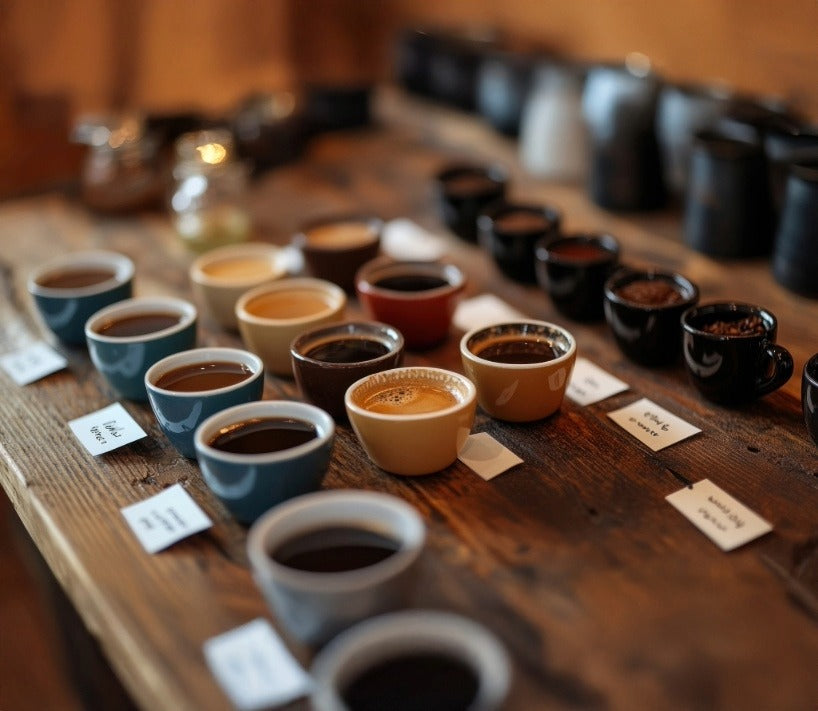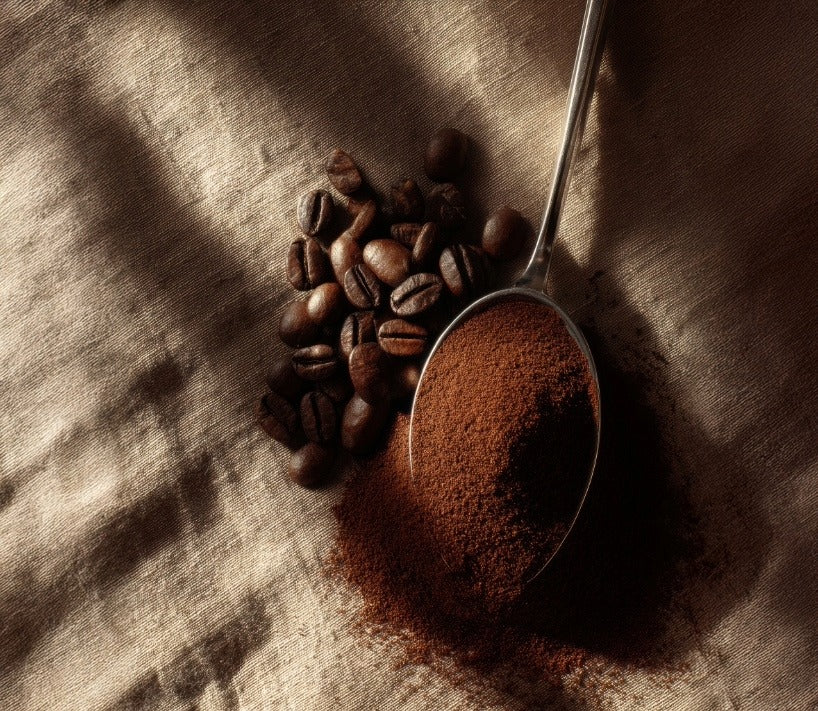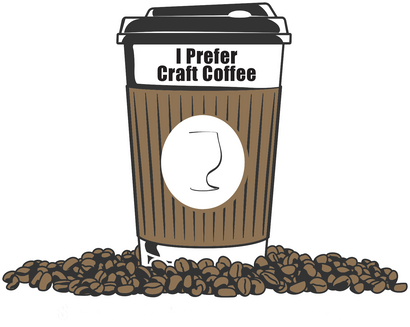Best Coffee To Buy Online: Espresso or Filter
May 05, 2025 5 min read
Espresso vs. Filter: The Roast Detective’s Guide to Choosing the Right Bean
Wait—Did I Just Pull an Espresso With Filter Beans?
True story: a few years ago I rushed to dial‑in a new bag that promised “jammy berries and dancing florals.” I ground fine, tamped like a champ, hit the button—and watched 30 seconds of sputtering bitterness gush into the cup. One sip, and my face did that meme‑worthy pucker. Spoiler alert: the coffee wasn’t awful; I’d simply tried to force a filter roast to behave like an espresso roast.
If you’ve ever asked, “How can I tell if these beans were roasted for espresso or filter methods before I ruin another morning?”—welcome! Grab your notebook (and maybe a towel for spills). By the end of this post you’ll have a fool‑proof checklist for decoding roasts, choosing the best espresso beans or filter champions, and making sure your best craft coffee at home doesn’t suffer the wrong extraction fate.
The Roast Detective Checklist
I’m breaking the detective work into 7 clues. Stack at least three clues together and you can feel confident about a coffee’s intended brew lane. Our main goal is to make you the Sherlock Holmes of java.
1. Label Language & Roaster Notes
Most modern roasters add brewing suggestions on the bag or product page. Phrases like “Chocolate & caramel—great for espresso” or images of tiny espresso cups are dead giveaways. Conversely, notes such as “filter roast,” “pour‑over optimized,” or “best for immersion brews” point to the other camp.
If you’re ordering the best coffee to buy online or scouting where can I buy fresh coffee beans near me, read deeper than the marketing headline. Look for:
-
Roast level (medium‑dark for classic espresso, light‑medium for filter).
-
Brew icons (V60, Chemex, etc.).
-
Solubility tests (rare but gold when present: roasters list percent extraction targets).
Pro tip: When a roaster lists dosage numbers like “1:2 ratio, 25 sec” they’re hinting espresso; “1:16 ratio, 3 min” screams filter.
2. Color & Surface Oils
Grab a handful of beans and inspect them under decent light:
-
Filter roasts → lighter brown, matte finish, no visible oil.
-
Espresso roasts → medium to medium‑dark, sometimes a satin sheen.
If the beans look like a dark chocolate bar left in the sun—glistening oil slicks—they’re probably beyond “espresso” and into the smoky Italian dark zone. You can still use these for shots, but they’ll overpower subtle notes.
Why it matters: Espresso brewing happens fast under nine bars of pressure, so a slightly darker roast increases solubility, ensuring you don’t pull sour, under‑developed shots.
3. Density Drop Test
Light filter roasts are denser; espresso roasts lose more moisture and puff slightly. Do a playful “clink test”: drop two beans on a hard surface. A higher‑pitched click often means dense light roast (filter), whereas a duller thud hints medium‑dark roast (espresso). It’s not lab science—but it’s shockingly effective when you compare side‑by‑side.
4. Grind Aroma & Particle Behavior
When you grind:
-
Filter‑targeted coffees smell vibrant, fruity, floral. Fine erosion dusts off in static‑charged clouds.
-
Espresso‑targeted coffees smell sweeter, with more caramelization, and create slightly clumpier grounds (thanks to oils & sugars).
If you’re the friend prepping best tasting whole bean coffee as a gift for coffee lover‑types, this quick sniff test can save embarrassment.
5. Brew Ratio & Extraction Window
Pull a tiny test shot or micro‑pour. If you notice:
-
Espresso roast extracts easily, giving a balanced 20‑30 sec shot around 1:2 ratio without tasting like lemon battery acid.
-
Filter roast may run too quick or taste aggressively sour until you grind even finer—yet doing so increases fines, choking the machine.
Conversely, in pour‑over land, espresso roasts can taste flat or intense even at coarser grinds.
6. Roast Date Window
Lighter roasts de‑gas slower. Many filter roasts taste best 5‑14 days off roast, while espresso roasts often shine 7‑21 days after. If a roaster recommends “rest 10 days,” it’s likely aimed at espresso lovers sourcing best specialty coffee online.
7. Origin & Processing Context
While not a rule, patterns emerge:
-
Natural Ethiopians and Kenya washed often get a lighter touch to preserve florals—filter hint.
-
Brazil, Colombia chocolaty lots lean medium for espresso.
Still, some roasters flip the script. That’s why stacking clues is crucial.
Putting It All Together (Your Brew‑Decision Matrix)
Below is an at‑a‑glance matrix. Use it the next time you buy specialty coffee online or pop into a local shop. Print it, tattoo it, or commit to memory—it’s your golden ticket to method‑matching coffee.
| Clue | Filter Roast ✔︎ | Espresso Roast ✔︎ |
|---|---|---|
| Bag says “filter / pour‑over” | Yes | — |
| Bag says “espresso / ideal for milk” | — | Yes |
| Color | Light‑medium matte | Medium‑dark slight sheen |
| Surface oils | None | Thin shine |
| Bean density sound | High‑pitch click | Soft thud |
| Grind aroma | Fruity, tea‑like | Caramel, cocoa |
| Easy espresso dial‑in? | No (sour, sprays) | Yes |
| Pour‑over clarity? | Yes | Can taste heavy |
| Degassing window | 5‑14 days | 7‑21 days |
If you hit three or more checks in one column, you’ve found your roast lane. Still unsure? Email or DM the roaster—most specialty folks geek out over brew questions (that's me!).
Beyond the Basics: FAQs for the Curious Palate
Q: Can I pull espresso with filter beans in a pinch?
Sure, but expect brighter acidity and lower body. Try a longer ratio (1:2.5 or 1:3), drop water temp to 90 °C, and extend contact time to tame sharpness.
Q: What about hybrid “omni roasts”?
Some roasters aim for a sweet spot that works for both methods. Omni roasts often sit squarely in medium territory, balancing solubility and acidity. Test both ways and decide which you prefer—it’s coffee, not a contract.
Q: Does bean variety dictate roast style?
Certain varietals resist dark roasts (delicate Gesha), while others sing in espresso (catuaí, bourbon). Yet roast philosophy ultimately wins. Always consult the bag or roaster notes.
Wrapping Up—Your Next Steps
-
Audit Your Coffee Shelf
Grab each bag and mark it “E” or “F” with a sharpie using today’s checklist. -
Experiment Mindfully
Brew a light filter roast as both V60 and espresso; log differences. You might discover a wild fruit‑bomb lungo you’ll love. -
Share the Knowledge
Next time someone asks for coffee beans as a gift, pass along the cheat sheet. They’ll think you’re a savant—and you’ll spare them mid‑holiday dial‑in frustration.
Remember, the magic of specialty coffee lies in intentionality—from farm practices to roast curves to your chosen brew device. By reading beans like a seasoned detective you ensure every cup—whether it’s your Monday‑morning good coffee to drink black or a Saturday cortado—expresses its full potential.
Now, go forth, brew confidently, and never again let a wrongly matched roast ruin your caffeine parade. Cheers to the best coffee to buy online from small roasters!
Also in Best Coffee To Buy Online Education

Best Specialty Coffee Explained: Why It Tastes So Much Better
December 20, 2025 5 min read
Learn why the best tasting specialty coffee at home tastes sweeter, cleaner, and better — and how to pick the best beans for home brewing. Taste the difference when you order coffee online through I Prefer Craft Coffee.

What Makes Specialty Coffee Taste Better: The Real Reason
December 19, 2025 4 min read
I’ve also roasted thousands of pounds of air roasted coffee beans, shipped fresh roasted coffee beans online, and helped tons of people upgrade from “meh” to “HOLY FLAVOR” with tiny changes.

How To Choose Specialty Coffee Beans the Easy Way
December 18, 2025 4 min read
Fresh roasted coffee beans online should tell you when the beans were roasted… not when the bag expires in 2028.
